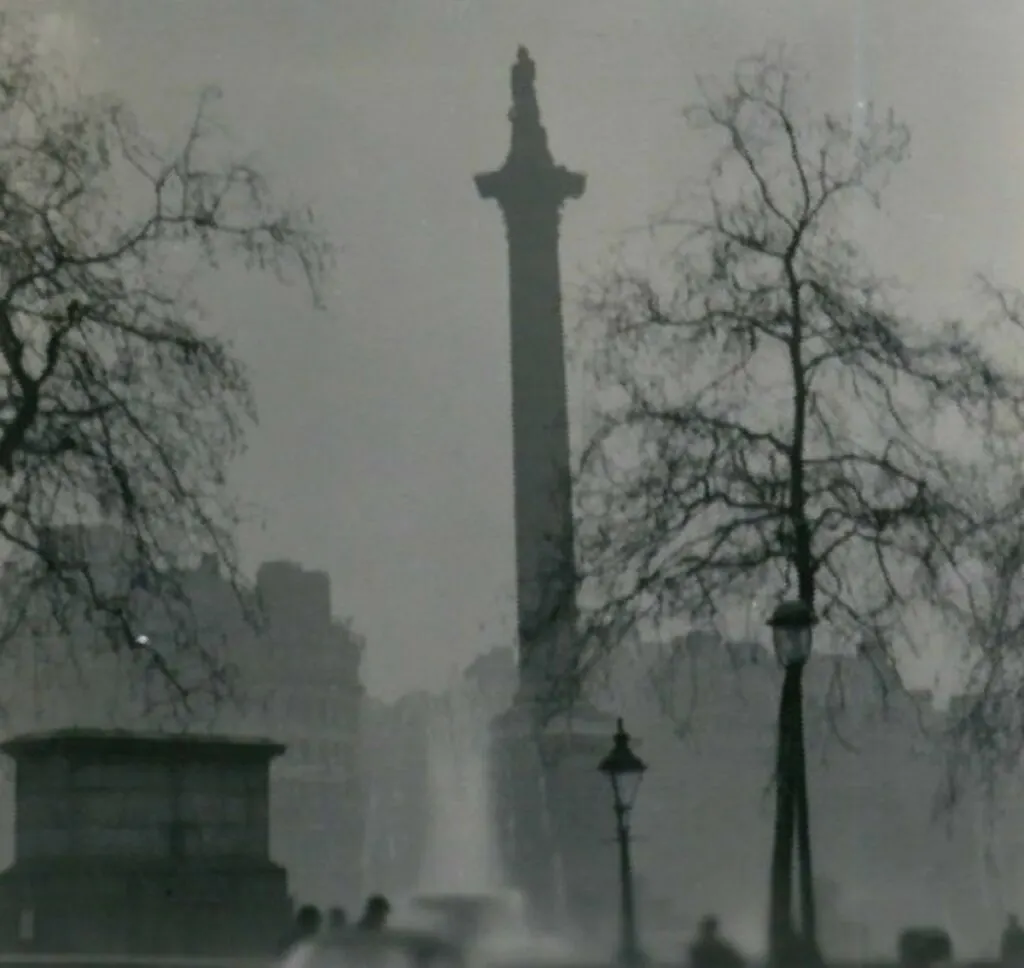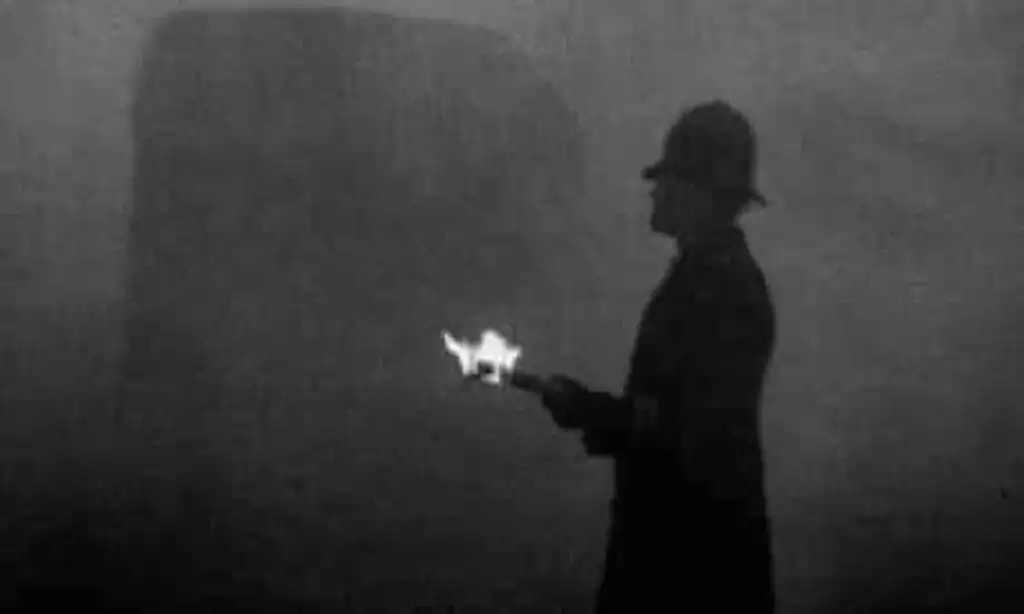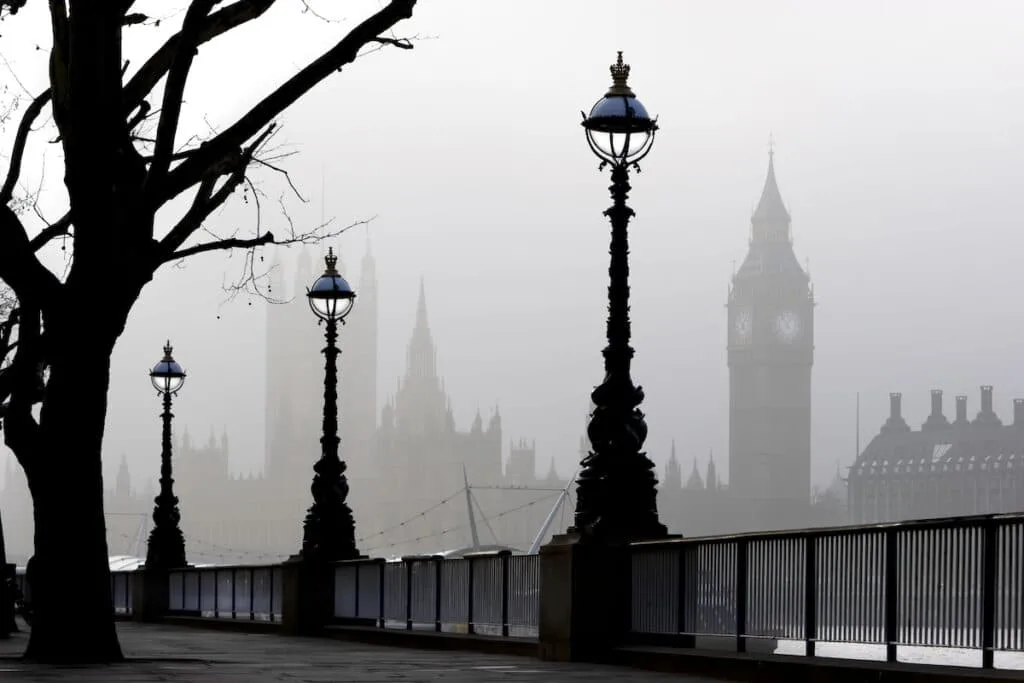How much do you know about the Great Smog of London? Don’t worry if you haven’t the foggiest, we’re here to tell all about the event that shook London in 1952.
This was one pea-souper with lasting effects (and if you’re confused as to what that means, you should probably check out our guide to Cockney slang here).
Settle in for a history class…
What Was the Great Smog of London?

The Great Smog of London was a tragic bout of air pollution that completely encompassed the capital in December 1952.
It’s true that London was no stranger to a foggy day (it still gets pretty misty sometimes) thanks to the Industrial Revolution during the Victorian era which championed the use of coal. Hindsight is a wonderful thing.
But, unlike other misty days in the capital, this smoggy event reduced visibility to just one foot in some cases and even made its way indoors. In other words, there was no escape for Londoners.
This killer London smog was far denser than any previous fog and was tinged with yellow tar (hence pea-souper) which led people to complain that it felt like they were going blind. Public transport was forced to a halt, and it was made impossible for people to drive es- including Ambulances.
While, at first, nobody panicked too much about the fog’s impact on public health (after all, London was used to it), it soon became clear that the amount of lung-related deaths in the capital were elevated.
At the time, the London smog deaths were estimated to be around 4,000, though 100,000 more were thought to be made ill with respiratory diseases.
Realistically, it’s now believed that between 10,000 and 12,000 people died as a result of the London fog.
What Caused the Great Smog of London?

The London smog disaster was caused by a terrible elixir of very cold temperatures mixed with an anticyclone and a lack of wind. This resulted in cold air becoming trapped under warm air in the sky just above the city and was a catalyst for disaster.
It’s thought that these conditions allowed airborne pollutants – mainly ones from burning coal for chimneys and the exhaust fumes from cars – to gather and create a blanket of horrific smog over the capital.
The bulk of the smog suffocated the capital between Friday 5 December and Tuesday 9 December in 1952, though it was quick to clear as soon as the weather changed.
The Legacy of the London Smog

However, the great fog of London was not a one-off – London has been cursed with terrible air quality since the 13th century. Saying that, the 1952 smog disaster is believed to be the most significant event in UK history due to its impact on both health and (thankfully) Government regulations.
One of the policies introduced directly as a result of this disaster was the Clean Air Act 1956.
The act set out the following: an introduction of smoke control areas where only smokeless fuels could be burned, dark smoke from chimneys was prohibited, and new furnaces installed in buildings had to be smokeless. Basically, if it made smoke, it was not welcome in London.
The effect of this was a major reduction in smoke and sulphur dioxide emissions from homes across the country.
This was followed by the Clean Air Act 1968, which took the legislation one step further: emitting dark smoke from a chimney was now an illegal offence, unless it fell under a very small category of exceptions.
In 2008, London introduced a low emission zone that meant people driving into central London would need to pay a toll. And this was made even stricter in 2019, when Central London was turned into an Ultra Low Emission Zone (ULEZ) and the rules applied 24 hours a day.
As recently as 25th October 2021, the Mayor of London expanded the ULEZ from just central London to now the North and South Circular roads. This is now 18 times bigger than the previous zone and covers a whopping 3.8 million people – which is nearly half of London’s population.
With sustainability being a hot topic in recent years, the UK Prime Minister has previously set targets for 2030 in order to reduce harmful emissions that impact human health.
There we have it – who would’ve thought that all these modern regulations stemmed from such a horrific event?

